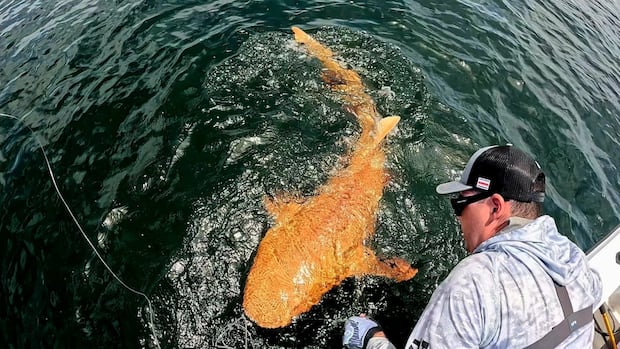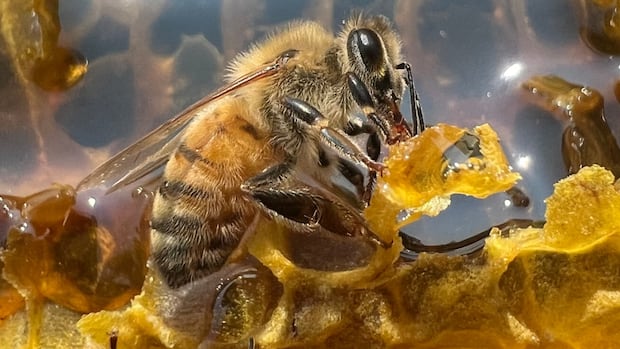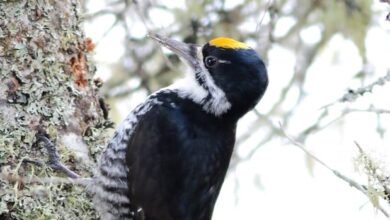This bright orange shark has shocked and delighted scientists

Marine biologist Daniel Arauz Naranjo had a jaw-dropping experience when he came across a bright orange nurse shark in the waters off Costa Rica. This rare sighting left him in awe, as he had never seen a shark with such a unique coloration before. The striking appearance of the shark led Naranjo to co-author a paper exploring the genetic mutations that may be responsible for its vibrant hue, which was recently published in the journal Marine Biodiversity.
The discovery of the orange shark was made by a group of sports fishermen who practice catch-and-release methods. After capturing the shark on film, they released it back into the water and shared their findings with local scientists. Naranjo commended the fishermen for their responsible handling of the creature, emphasizing the importance of minimizing stress on marine life during research efforts.
Nurse sharks are typically tan or dark brown in color and are considered a vulnerable species due to various threats such as climate change, pollution, and overfishing. These nocturnal creatures play a vital role in their ecosystem by feeding on crustaceans, mollusks, and stingrays, while seeking shelter in caves and crevices during the day.
Upon closer examination of the orange shark footage, Naranjo and his team identified two rare genetic conditions that likely contribute to its unusual appearance: albinism and xanthism. Albinism results in a lack of melanin, giving the shark its white skin and eyes, while xanthism causes a yellow or golden hue. The combination of these conditions creates the shark’s vibrant neon orange coloring, a phenomenon never before documented in a shark species.
Shark scientist James Sulikowski praised the research findings and expressed fascination with the unique coloration of the shark. He raised questions about how such a distinct appearance could impact the shark’s survival in its environment, considering the potential risks of increased visibility to predators and prey.
As Naranjo awaits further sightings of the orange shark, he reflects on the mysteries of genetic mutations and their potential links to environmental factors. The possibility of more candy-coated carnivores lurking in the waters off the Caribbean coast remains a tantalizing prospect for researchers and enthusiasts alike. The quest to uncover the secrets behind the orange shark’s coloration continues, with Naranjo eagerly anticipating the opportunity to observe one of these rare creatures up close in the future.




